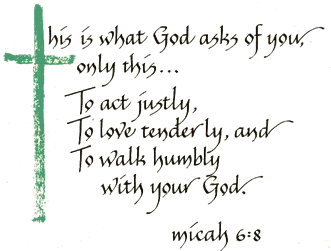catholicPittsburgh.org is the place for information, news, commentary, reflections and community building among the people of God who are renewing the Catholic Church in Western Pennsylvania.
More about us
Welcome ...
Partnering Groups
The following organizations are partners with catholicPittsburgh.org:
The Second Vatican Council--Second in a Three-Part Series
By John Houk
It may strike some as rather dry and uninteresting to plow through documents
written forty years ago. I can only add that they, along with the people
who have read them, are why I can still find a home in the Catholic Church.
At the age of 67 my formal education in Catholic teaching was pre-Vatican
II. It was a satisfying experience because at that time in my life I wanted
a closed system of thought. These are the questions and these are the answers
was the way Catholic thought was presented to me, and it gave me a sense
of completeness and intellectual security. That must have been what I needed,
and perhaps the Church understood that.
The Second Vatican Council swept away hard-core Catholic positions that had
been blessed by previous Councils and numerous popes. Catholics responded to
this newness in several ways. As my father enjoyed saying, there were those
who made things happen, those who watched things happen, and those who said, “What
happened?” It was my experience that most of us watched, and a lot of
wondered. If it had not been for my own questioning children and faith-filled
wife I probably would never have gotten past the wondering phase which would
inevitably have resulted in my drifting away.
The Council, as I now understand it, was an invitation to discipleship, and
the key to discipleship is that you will never understand your faith until
you try it out yourself. It is a do-to-learn system. How different from my
previous expectations of pre-determined questions and answers. Yes, there is
top-down teaching in the Council documents, but now I, and you, are included
in vastly new and important ways. At its most basic level the Council was an
invitation to participation.
Liturgy is no longer a spectator sport. We now use a language everyone can
understand (I think there are 135 of them actually—49 in Los Angeles
every Sunday) so we can experience “full, conscious, active participation” (Council
language).
Religion as a state sponsored activity because “error has no rights” as
had been taught for centuries is dead. Now every person (i.e., now you must
decide) has the right to religious liberty.
Involvement with people of other faiths is no longer forbidden, but ecumenism
is an inseparable part of what we are to be about, and guess who is supposed
to be doing it? Yes, you.
And the Church, who is the Church? We are. The Church is “People of
God” which includes everyone. We mean just Catholics, right? No salvation
outside the Church, right? Perhaps this is where I challenge you to do some
reading of those dry old documents. A suggested place to start is the Decree
on Ecumenism, and then try the Declaration
on the Relation of the Church to Non-Christian Religions.
Some graduate student challenged by the new tone/spirit expressed in the Vatican
II documents compared the use of certain words in the documents of Vatican
I (1869-70) and Vatican II (1962-65). The number of times these words were
used follows:
| Words Used |
Vatican I
|
Vatican II
|
|---|---|---|
| Dialogue |
0
|
31
|
| Fraternal |
0
|
49
|
| Ministry |
0
|
80
|
| Love |
0
|
113
|
| Service |
0
|
144
|
| Lay Person |
0
|
200
|
This is an open invitation to participation. Without that clear intent of
the Council, I would surely not be encouraging you to read what this Council
of 1,500 bishops had to say.
- By JoanHouk at May 6 2006 - 6:31pm
- Articles
Micah 6:8

©1996 Cards by Anne
Used with permission